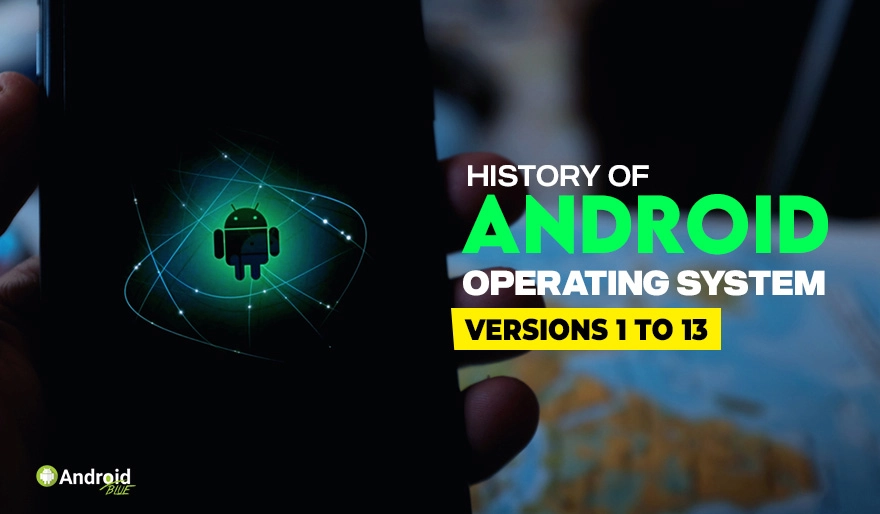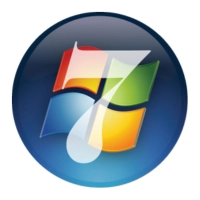History of Android Operating System | Versions 1 to 13
30 min read Android phones have always been a popular choice for consumers, from their first release to the latest models. While the platform has seen its share of ups and downs, it has remained one of the most p... June 08, 2023 05:36
Android phones have always been a popular choice for consumers, from their first release to the latest models. While the platform has seen its share of ups and downs, it has remained one of the most popular choices for smartphone users.
But where did Android come from, and how did it become the platform that it is today? This article will explore the history of Android phones, starting with its birth and moving forward to the latest models. This article will also cover the history of the development of Android phones, the platform’s evolution over the years, and the various features that make it so great.
What is Android?
Android is an operating system for smartphones. Android is the world’s most used operating system, powering over two-thirds of all smartphones. It’s been a key part of our lives for years, and we’ll continue to depend on it for years to come.
The History of Android
The history of Android is long and filled with many changes and improvements. It was originally designed and developed by Google. But its humble beginnings was in 1999 as a research project at Stanford University to the platform that powers billions of devices around the world.
The first Android phones were little more than a phone with a few pre-installed apps. However, over time, starting from when it was first announced to when it became the most popular OS. Android has evolved into the mobile operating system that we use today.
Who Invented Android?
Android was invented by an American technology company named Android Inc. The owner of this company was Andy Rubin, Rich Miner, Nick Sears, and Chris White. They founded Android Inc in October of 2003, in the Palo Alto city of the California state of USA.
Interesting fact is, Android was not created for mobile phones but cameras. They were trying to make a smart operating system for cameras. After five months of founding Android Inc, founders decided to develop Android as an operating system for handset. As, it will get more market.
Who Owns Android
Android Inc. had difficulty getting investors and had a shortage of money. Founders of android wanted to alliance with Samsung and HTC. Then Google entered the scenario and bought the company with 50 million dollars.
Founders of Android Inc. Andy Rubin, Rich Miner, Nick Sears, Chris White and the key employees joined Google to continue working on Android as they invented and also understood Android better than anyone else. Google made Andy Rubin as the leader of the team of Android project.
Another important fact is that Andy's real name is Andrew E. Rubin. And he worked for Apple before founding his own company. Back in 1989 Andy was nicknamed ‘Android’ for his extreme interest in robots.
Android Logo
The Android logo resembles a combination of both a large green bug and a robot. The Android logo was designed by Irina Blok when she was employed at Google. Irina got very little instruction from the Google design team other than to make the Android logo like a robot.
Irina thought that the logo should represent both male and female not just a single sex. Her unique ability of thinking became alive when she noticed the logo of the restroom representing ‘Men’ and ‘Women’. Final design of the android mascot comes from that very logo of the restroom.
Google chose to make the Android robot an open source project as Irina also had the same thought. Under the Creative Commons 3.0 attribution license, Google allowed and accepted other redesigns of the Android logo.
About Logo Creator
Irina Blok was born around 1977. She studied at San Jose State University and received a Graphic Designer Degree from there. She got the most popularity for creating the Google Android logo and also green robot icon or mascot.
She began her professional career as a brand designer at Landor Associates. She pursued her profession at several tech firms including Yahoo, Google and Adobe.
List of Android Versions
Android has upgraded many times since it was released. Each version has its own significance. Let’s look at each version in details to understand better,
1: Android Version 1.0: The Debut Version
Android had its first public debut in September 2008 with Android version 1.0. First Android smartphone in history is the T-Mobile G1, also known as the HTC Dream. Prior to that, back on 5 November 2007, Google launched the public beta of Android version 1.0 for developers.
It had a 3.2 inch pop up touch screen. Also it had a QWERTY physical keyboard. Things were pretty basic back then but this version had a collection of early Google apps like Gmail, Maps, Calendar, and YouTube. It lacked a headphone jack and also a cute code name which users adore.
2: Android Version 1.5: Cupcake
The release of Android version 1.5, Cupcake in April 2009, marked the introduction of the first official public codename for the operating system. Project manager Ryan Gibson gave Android updates names based on deserts. His precise motivations for adopting such a naming scheme is still unknown. But users love the fantastic idea of naming updates after deserts.
Compared to the first public version, Cupcake offered a lot of new features. These features are so basic that we take these for granted today.
Most appealing feature of this version was the on screen keyboard. Previously a physical keyboard needed to be attached on the phone. This version made the physical keyboard unnecessary with an on screen keyboard. Eventually the physical keyboard disappeared from Android phones.
This version also allowed Android users to capture not only pictures but also videos. Prior version doesn’t have the capacity to record videos. Previous versions only had the ability to capture images. Cupcake gave the users the ability to not only record videos but also upload videos on Youtube.
The Cupcake version of Android made the widgets SDK available to other developers. Prior to that Android supported widget. But the major problem was third party developers were unable to design and use them. This problem was solved with the Cupcake version.
With Android Cupcake users had new features such as, the ability to rotate their screen automatically, ability to check phone usage history, ability to copy-paste from browser, ability to inspect phone usage history, and so forth.
The original Samsung Galaxy phone and the HTC Hero are just a couple of the phones that were made available with Cupcake pre-installed.
3: Android Version 1.6: Donut
In September 2009, Google released Android 1.6 Donut. The new operating system now supported CDMA-based carriers. This made it possible for any carriers in the globe to sell Android phones. Including Verizon, Sprint, and many big networks in Asia. It increased the number of Android users in a very large number.
The Android Donut version has the capacity to run on different screen sizes and resolutions. Dell Streak was one of the Donut installed phones which was then considered as a tablet. Because it had a 5 inch screen. It was considered as a giant screen back then. In the present day, a 5-inch display is quite tiny for a smartphone.
Donut also launched a widget for controlling Wi-Fi, Bluetooth, GPS, etc. Donut also included a new Android Market which Google Play in present days that had a lot of free and paid apps.
It also allowed users to have a quick search box, bookmarks on web browsers, greater integration of gallery, fast access to camera etc.
4: Android Version 2.0: Eclair
Google unveiled Android 2.0, codenamed Eclair, in October 2009, almost a year after Android 1.0 was first introduced. Text-to-speech functionality was included for the first time in this edition, along with a host of other brand-new features including live wallpapers, support for multiple accounts, and Google Maps navigation.
The first phone with Android 2.0 out of the box was the Motorola Droid. Additionally, Verizon Wireless's first Android-based phone was the Droid.
Interesting fact is, while Google was free to use the name Android for their operating system, Lucasfilm trademarked the term "Droid" in reference to the Star Wars robots. To utilize the name for their phone, Motorola had to obtain permission from Lucasfilm and make a small payment. Even as late as 2016, Motorola was utilizing the Droid name for several of their smartphones.
5: Android Version 2.2: Froyo
In May 2010, the official release of Android 2.2 Froyo took place. Froyo is the short form of frozen yogurt. The Android Cloud to Device Messaging (C2DM) service, Wi-Fi mobile hotspot capabilities, flash support, and other new features were all available on smartphones running Froyo.
The Nexus One, the first Android smartphone to bear Google's Nexus branding, shipped with Android 2.1 out of the box in early 2010. But received an over-the-air update to Froyo shortly afterward. In order to showcase pure Android, Google adopted a new strategy, collaborating more closely than ever with the hardware maker HTC.
6: Android Version 2.3: Ginger Bread
Launched in September 2010 was Android 2.3 Gingerbread. Under Gingerbread, the OS's user interface was updated. It introduced support for smartphones equipped with the necessary hardware to use near field communication (NFC) features. The Nexus S, which was co-created by Google and Samsung, was the first phone to come equipped with both Gingerbread and NFC technology. Gingerbread also paved the way for the selfie by integrating Google Talk with video chat and enabling support for multiple cameras.
7: Android Version 3.0: Honeycomb
The most peculiar of the list is probably this OS version. For tablets and other mobile devices with bigger screens, Honeycomb was developed. Along with the Motorola Xoom tablet, it was originally announced in February 2011. It had elements like a notification bar that was put at the bottom of a tablet's display and a reworked user interface for large displays.
Honeycomb was supposed to deliver functionality that smaller screens on smartphones were unable to manage. Additionally, it was a response by Google and its third-party collaborators to Apple's launching of the iPad in 2010. Some tablets were still introduced with the smartphone-based Android 2.3 versions even though Honeycomb was available. In the end, Honeycomb was an Android version that did not gain much popularity. The majority of Google's features will be included in the company's upcoming big 4.0 update, Ice Cream Sandwich. In the history of Android, it stands out a little.
8: Android Version 4.0: Ice cream Sandwich
The Android Ice Cream Sandwich version, which was released in October 2011, added a number of new features. It integrated many of the features of the Honeycomb tablet-only version with the Gingerbread designed for smartphones. It also had the first support for unlocking a phone by taking a photo of its owner's face with the camera using the phone's camera and a "favorites tray" on the home screen. Since then, that form of biometric sign-in support has significantly changed and advanced.
Other noteworthy updates in ICS were support for all on-screen buttons, swipe motions to close browser tabs and alerts, and the ability to keep an eye on your mobile and Wi-Fi data use.
9: Android Version 4.1: Jelly Bean
With the introduction of Android 4.1 in June 2012, the Jelly Bean era of Android technology began. Versions 4.2 and 4.3, both known as "Jelly Bean," were swiftly published by Google in October 2012 and July 2013, respectively.
New notification capabilities that displayed additional content or action buttons were among the new features added in these software upgrades. Android 4.2 also added complete support for Google's Chrome web browser for Android. Along with Google Now, "Project Butter" was developed to speed up animations and enhance Android's touch responsiveness. Google Now also made an appearance as part of Search. Additionally supported were Miracast, external displays, and HDR photography.
10: Android Version 4.4: Kitkat
The name of a candy bar that had previously been trademarked was utilized for the first time in Android 4.4. The firm hinted that the codename for Android 4.4 would be "Key Lime Pie" at its Google I/O conference that year, before it formally arrived in September 2013. In fact, the majority of the Android team at Google also believed it to be the truth.
As it turned out, John Lagerling, Google's director of Android global partnerships, believed that "Key Lime Pie" would not be a well recognized name. He opted to go in a different direction instead. He got in touch with Nestle, the company that made the KitKat bar, and incised about using the name for Android 4.4. KitKat was chosen as the name of the upcoming Android version after Nestle's approval. It was a marketing experiment that Google didn't pick up again until the release of Oreo.
While KitKat didn't have many novel features, it did include one that contributed to the growth of the Android market as a whole. Android was made to run more efficiently on phones with as low as 512 MB of RAM. This made it possible for phone manufacturers to utilize the most recent Android operating system on far less expensive devices. The first smartphone with Android 4.4 preinstalled was Google's Nexus 5.
11: Android Version 5.0: Lollipop
Android 5.0 Lollipop, which was first released in the fall of 2014, significantly changed how the operating system appeared in general. It was the first OS to employ Google's brand-new material design syntax. In order to replicate a paper-like appearance for the Android user interface, it made extensive use of lighting and shadow effects, among other things. Other improvements to the UI include a refreshed navigation bar, rich notifications for the lock screen, and several others.
The later Android 5.1 upgrade included some further internal modifications. In addition to Device Protection, which prevents criminals from accessing your phone even after a factory reset, this contained official support for dual-SIM and HD Voice calls.
The first devices with Lollipop pre-installed were Google's Nexus 6 smartphone and Nexus 9 tablet.
12: Android Version 6.0: Marshmallow
Android 6.0 Marshmallow, which was released in the autumn of 2015, featured the candy that campers love as its primary icon. Before Marshmallow became the official name for Android 6.0, Google internally referred to it as "Macadamia Nut Cookie." Along with Google Now on Tap, it included a redesigned vertically scrolling app drawer, native support for fingerprint biometric unlocking, USB-C compatibility, Android Pay which is Google Pay in present days and many more improvements.
Google's Nexus 6P and Nexus 5X smartphones were the first to arrive with Marshmallow already loaded. The Pixel C tablet also has Marshmallow pre installed.
13: Android Version 7.0: Nougat
In the autumn of 2016, Google released another version of Android which is Nougat. Google internally nicknamed Android N "New York Cheesecake" prior to the public release of Nougat. For the increasing number of devices with larger displays, greater multitasking capabilities like split-screen mode and rapid app switching were among Nougat's numerous new features.
Google also saw some significant adjustments. It used the Vulkan API for quicker 3D rendering, upgraded to a new JIT compiler to speed up applications, and allowed OEMs to adopt its now-defunct Daydream VR platform.
A bold entry into the market for high-end smartphones was also made by Google using the release. The first smartphones with Nougat pre-installed were the LG V20 and the company's own Pixel and Pixel XL.
14: Android Version 8.0: Oreo
Google unveiled and made available the first developer preview of Android O, also known as Android 8.0, in March 2017. The first concrete indication that the renowned cookie Oreo will really serve as the official codename for Android 8.0 came from Hiroshi Lockheimer. He is the senior vice president of Android at Google. He shared a GIF of an Oreo cake on Twitter before its release.
Google officially announced the public name for Android 8.0 in August. It was the second time the business has chosen an Android trademarked name. Nabisco was the owner of Oreo. Google debuted the statue of the Android Oreo mascot at a press conference in New York City. Later that day, Google installed a second mascot at their main office.
The Settings menu received several cosmetic updates with Android Oreo. Additionally, it has new autofill APIs for improved handling of passwords and fill data, notification channels, native support for picture-in-picture mode, and much more. First to receive Android Oreo updates were Google's own Pixel 2 smartphones.
15: Android Version 9: Pie
On March 7, 2018, Google released the first developer preview of Android 9.0 P, the following significant Android upgrade. The organization formally unveiled Android 9.0's final version on August 6, 2018. "Pie" was the official codename.
Some key new additions and modifications in Android 9.0 Pie turned out to be noteworthy in Android history. One of them removed the navigation buttons and replaced them with a single, lengthy button in the middle. Overview appears when you swipe up from it. To view all of your recently opened applications, slide left. To swiftly navigate through your apps, you have to drag the home button to the right.
Additionally, Android 9.0 Pie included several new features that are intended to increase the battery life of your smartphone. By utilizing machine learning on-device, this makes predictions about the applications you'll use and the ones you won't use right away.
Pie also contains Shush, a function that instantly allows you to turn Do Not Disturb mode on your phone. Another option is Slices, which offers a tiny version of an installed program inside Google Search and allows users to access specific app features without launching the full app.
Like always, Google's Pixel phones had access to Android 9.0 Pie first.
16: Android Version 10
Another significant milestone in the history of Android was reached ten years after the OS's introduction. On March 13, 2019, Google released the initial Android Q developer preview. Android Q debuted as Android 10 at launch. It was made available for Google Pixel smartphones on September 3, 2019.
On August 22, 2019, Google unveiled a significant update to the Android name. Along with a new logo, the decision was made to eliminate the dessert name for the upcoming version. The decision to eliminate desert names was taken because these sweet dishes were not well known all around the world. And people from different countries find it very hard to pronounce these names.
The new features and enhancements in Android 10 included a number of new APIs as well. Support for the foldable phones was among those things. Along with improved android gesture navigation controls, a more effective sharing menu, smart reply features for all messaging applications and increased control over app-based permissions. Android 10 also brought a system which is dark mode.
17: Android Version 11
Android version 11 was finally released on 8 September after the release of many preview beta versions of Android 11 since 18 February. The most major changes in this edition involve privacy. Now users have the ability to allow or disallow access to location, camera, microphone on a single based use. Android 11 makes it more difficult for apps to request for location permission.
It made it nearly impossible to see what other app a user has on their phone. All these upgrades were made to protect the data of users. Android 11 also allows Google to update applications in the Play Store regularly and universally.
Bubbles, a new type of multitasking system, makes its lengthy debut in Android 11. Also a lot of small but significant updates were made in Android 11 such as screen recording with audio without the help of a third party app. Another amazing feature is controlling smart devices with your Android phone.
18: Android Version 12
Google launched developer preview of Android 12 on 18 February. Finally the official launch took place on 19 October 2021. Android 12 is reported to have a code name which is ‘Snow Cone’.
New features of Android 12 include widgets that are simpler to use and more flexible to their surroundings. Quick Settings have been expanded into bigger tiles for better access. The Settings menu now has a cleaner appearance and bigger text. There are also more dynamic animations.
Some minor updates include, scrollable screen shots, improved notifications, app search, nearby share for simpler Wi-Fi sharing, one-handed mode, and audio selection access from the media player.
Google released Android 12L in March 2022 which is considered another significant update. It is specially for larger and foldable smartphones.
19: Android Version 13
Android Version 13 is considered the latest version of Android. Developer preview of Android 13 was released in February, 2022. In April 2022, the first public beta for Pixel smartphones was released. The final launch of Android 13 is expected to take place in August 2022. Many beta versions will be released by that time.
Android 13 is considered to have an initial codename which is ‘Tiramisu’.The new version of OS will include an updated silent mode that disables all notifications, including vibrations and haptics, in case a call comes in. Additionally, you may disable app alerts as soon as you install a new app. If there is a Bluetooth speaker device nearby, the fast pair function will detect it and ask for your permission whether to connect it or not.
Conclusion
Android is the most demanded operating system in the market now. With the launch of each update Android went beyond limits and also amazed their users. It is considered that Android will continue to dominate the market in the future. However, Android also has a number of flaws that Android must fix in order to remain a worthy opponent to its rivals.
User Comments (0)
Popular Apps









